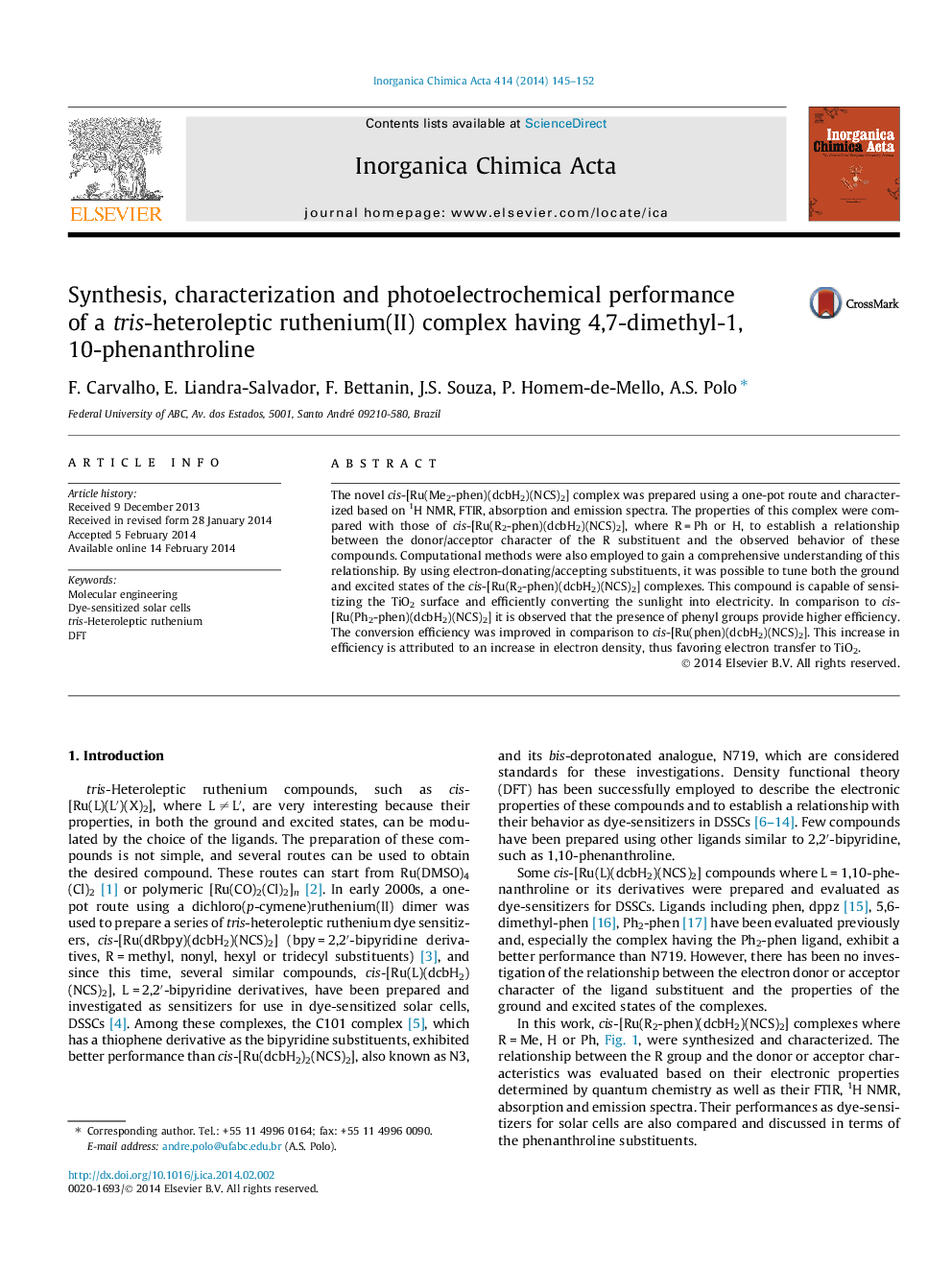| Article ID | Journal | Published Year | Pages | File Type |
|---|---|---|---|---|
| 1305677 | Inorganica Chimica Acta | 2014 | 8 Pages |
•Using R = methyl or phenyl improves the sunlight into electricity conversion.•Changes in R is a viable way to tune the properties of cis-[Ru(R2-phen)(dcbH2)(NCS)2].•The calculated properties of the complexes agree to those experimentally observed.
The novel cis-[Ru(Me2-phen)(dcbH2)(NCS)2] complex was prepared using a one-pot route and characterized based on 1H NMR, FTIR, absorption and emission spectra. The properties of this complex were compared with those of cis-[Ru(R2-phen)(dcbH2)(NCS)2], where R = Ph or H, to establish a relationship between the donor/acceptor character of the R substituent and the observed behavior of these compounds. Computational methods were also employed to gain a comprehensive understanding of this relationship. By using electron-donating/accepting substituents, it was possible to tune both the ground and excited states of the cis-[Ru(R2-phen)(dcbH2)(NCS)2] complexes. This compound is capable of sensitizing the TiO2 surface and efficiently converting the sunlight into electricity. In comparison to cis-[Ru(Ph2-phen)(dcbH2)(NCS)2] it is observed that the presence of phenyl groups provide higher efficiency. The conversion efficiency was improved in comparison to cis-[Ru(phen)(dcbH2)(NCS)2]. This increase in efficiency is attributed to an increase in electron density, thus favoring electron transfer to TiO2.
Graphical abstractThe cis-[Ru(Me2-phen)(dcbH2)(NCS)2] complex was prepared and characterized by several techniques. The properties of this complex were compared with those of cis-[Ru(R2-phen)(dcbH2)(NCS)2], where R = Ph or H. Computational methods were also employed to gain a comprehensive understanding of this relationship. These compounds are capable of sensitizing TiO2 and converting sunlight into electricity.Figure optionsDownload full-size imageDownload as PowerPoint slide
